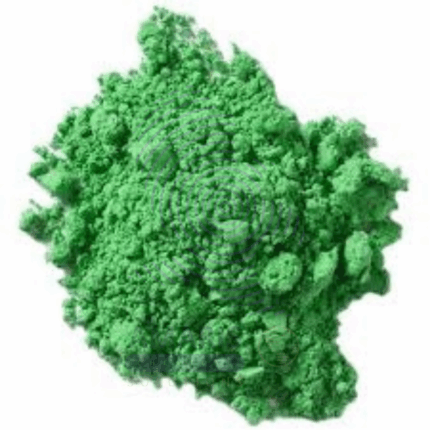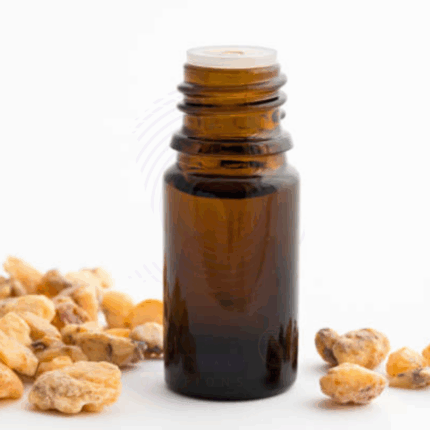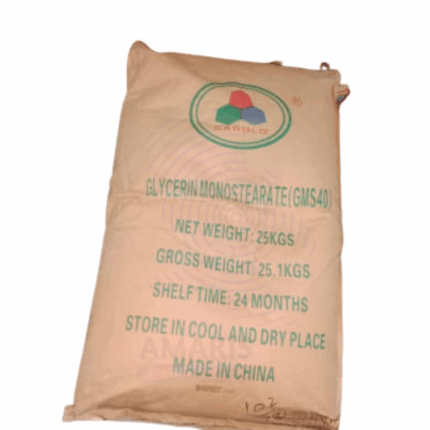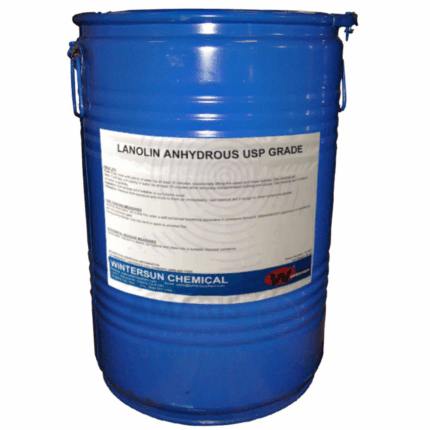Squalene Oil
Whatsapp Order
Squalene Oil is a naturally occurring hydrocarbon derived primarily from olive oil, sugarcane, or deep-sea shark liver. Its light, silicone‑like texture and excellent emollient properties make it highly valued in skin and hair care applications. Squalene is known for its deep moisturizing, antioxidant, and regenerative abilities, aiding in skin barrier repair and supporting hydration without comedogenic effects. Widely used in cosmetic and personal care formulations, it is also included in nutraceuticals and pharmaceutical excipient systems for its biocompatibility and stability.
Description
Table of Contents
Toggle
Squalene Oil
Primary Uses
- Aromatherapy & Wellness
- Used as a carrier oil in aromatherapy blends due to its stability and skin-friendly absorption profile.
- Applied in massage oils to moisturize and protect skin while minimizing greasiness.
- Included in wellness formulations where skin compatibility is essential (e.g. sensitive-skin blends).
- Cosmetics and Personal Care
- Added to moisturizers, serums, and facial oils for deep hydration and anti-aging effects.
- Used in lip treatments, eye creams, and scalp oils for gentle, non-irritating nourishment.
- Incorporated in hair serums and conditioning products to smooth and protect strands.
- Formulated into body lotions, butters, and barrier creams for dry or compromised skin.
- Topical Applications
- Used as a base or diluent in formulations delivering active botanical extracts and essential oils.
- Applied in gentle after-sun, cuticle, and ointment-type products designed to support skin restoration.
Secondary Uses
- Pharmaceutical Chemicals
- Used as an excipient or solubilizer in injectable, topical, and oral formulations.
- Employed in vaccine adjuvant and drug delivery systems as a biocompatible lubricant or carrier.
- Cosmetic and Personal Care Chemicals
- Used as an emollient and antioxidant in premium formulations targeting anti-aging, sensitive, or hypoallergenic markets.
- Environmental and Green Chemicals
- Derived from renewable plant sources (e.g. olive, sugarcane) making it sustainable and eco-friendly in natural formulations.
KEY PRODUCT FEATURES
1. Basic Identification Attributes
- Botanical/Chemical Name: Squalene (plant-derived or shark-derived)
- Common/Trade Name: Squalene Oil
- INCI Name: Squalane (if hydrogenated), Squalene (in active form)
- CAS Number: 111-02-4 (Squalene), 7683-42-7 (Squalane)
- HS Code: 2903.39
- Synonyms: Squalane Oil, Hydrogenated Squalene, Olive Squalene
2. Physical & Chemical Properties
- Physical State: Colorless to pale yellow oily liquid
- Color & Odor: Nearly odorless or faint oily scent
- Solubility: Insoluble in water; soluble in alcohols and oils
- Refractive Index: 1.465 – 1.480
- Specific Gravity: 0.810 – 0.850
- Main Components: Pure squalene or squalane hydrocarbon (C₃₀H₅₀)
3. Safety & Hazard Attributes
- GHS Classification: Non‑hazardous at typical use levels; unlikely to cause skin irritation
- Toxicity: Very low toxicity; suitable for topical and food-grade use (varies by derivation)
- Exposure Limits: No specific occupational limits defined; general good manufacturing practices apply
- Allergen Information: Hypoallergenic; low risk of allergic reaction
4. Storage & Handling Attributes
- Storage Conditions: Store in a cool, dry, well-ventilated area away from direct heat and light
- Container Type: Amber glass or HDPE containers with airtight closures
- Shelf Life: 24 to 36 months when stored properly
- Handling Precautions: Avoid contamination; no special precautions beyond standard hygiene
5. Regulatory & Compliance Attributes
- Generally recognized as safe (GRAS) in food applications (plant-derived)
- Compliant with IFRA standards when used as inert carrier in fragrance formulations
- Produced in GMP‑compliant facilities
- Not classified as hazardous for transport under standard shipping regulations
6. Environmental & Health Impact
- Biodegradability: Biodegradable under standard environmental conditions
- Ecotoxicity: Low environmental toxicity at typical usage concentrations
- Bioaccumulation: Not expected to bioaccumulate
- Environmental Impact: Renewable-sourced variant contributes to sustainable supply chains
SAFETY HANDLING PRECAUTIONS
Safety Handling Precautions
- PPE Required: Standard gloves recommended for bulk handling
- Handling Guidelines: Use in ventilated areas; avoid contamination and prolonged direct skin exposure in undiluted form
First Aid Measures
- Inhalation: Not applicable—vapors not expected at room temperature
- Skin Contact: Safe for topical use; wash with soap and water if irritation occurs
- Eye Contact: Rinse with water; obtain medical attention if irritation continues
- Ingestion: Generally safe in food-grade purity; seek medical advice if adverse reaction occurs
Firefighting Measures
- Fire Hazards: Combustible under high temperature; keep away from open flame
- Extinguishing Media: Foam, dry chemical, carbon dioxide, or water mist
- Special Precautions: Use protective gear in fire scenarios
- Hazardous Combustion Products: Carbon monoxide, carbon dioxide, possible hydrocarbons
Related products
Cetyl Alcohol Flakes
Cetyl Alcohol Flakes is a high-purity fatty alcohol derived mainly from natural sources such as palm oil and coconut oil. Presented as white to off-white waxy flakes, this product contains at least 98% pure cetyl alcohol, ensuring consistent performance and quality. It is valued for its excellent emollient, thickening, and emulsifying properties and is widely used in personal care, pharmaceutical, and industrial formulations. The flake form facilitates easy handling, melting, and dosing in manufacturing processes. Cetyl Alcohol 98% Flakes contributes to the texture, stability, and moisturizing properties of various formulations, providing a non-greasy, smooth finish.
Emulsifier (Emulgator)
Emulsifier is a nonionic surfactant belonging to the family of Nonylphenol Ethoxylates (NPEs), specifically with an average of 9 ethylene oxide (EO) units. It is widely used as an effective emulsifying, wetting, dispersing, and solubilizing agent. NP-9 is typically a pale yellow to amber viscous liquid, soluble in water and various organic solvents. It is valued for its strong emulsifying ability to stabilize oil-in-water (O/W) and water-in-oil (W/O) emulsions, excellent detergency, and good compatibility with other surfactants and formulation ingredients. NP-9 is commonly employed in industrial, agricultural, cosmetic, pharmaceutical, and cleaning applications.
Glycerol Monostearate Powder
Glycerol Monostearate Powder is a white to off-white, free-flowing powder composed of 50% monoglycerides of stearic and palmitic acids, typically derived from vegetable oils. It is a non-ionic emulsifier widely used in food, cosmetics, pharmaceuticals, plastics, and industrial applications. GMS functions as an emulsifying agent, stabilizer, thickener, anti-staling agent, and opacifier. In food, it improves texture and extends shelf life. In cosmetics and pharmaceuticals, it enhances creaminess and stability. GMS 50% is often blended with other emulsifiers or surfactants and is valued for its versatile functionality, safety, and compatibility with a wide range of ingredients.
Hycryl
Hycryl is a specialized acrylic copolymer resin designed primarily for industrial and cosmetic applications. It appears as a white to off-white powder or granules with excellent film-forming, adhesive, and thickening properties. Known for its compatibility with a wide range of solvents and plasticizers, Hycryl 77 provides excellent clarity, flexibility, and durability in coatings, adhesives, and personal care formulations. Its balanced molecular weight and functional groups enable it to deliver strong binding and aesthetic properties in both aqueous and solvent-based systems.
Hydroxyethyl Cellulose
Hydroxyethyl Cellulose , marketed under brand names such as Natrosol, is a non-ionic, water-soluble polymer derived from cellulose by reacting alkali cellulose with ethylene oxide. It appears as a white to off-white, free-flowing powder with excellent thickening, binding, and film-forming properties. HEC is widely used as a rheology modifier and stabilizer due to its high water retention, solubility, and compatibility with a broad range of ingredients. It is valued in many industries including cosmetics, pharmaceuticals, paints, adhesives, and personal care products.
Illipe Butter
Illipe Butter is a natural, hard vegetable fat derived from the nuts of the Shorea stenoptera tree, native to the rainforests of Borneo. Known for its high melting point and rich moisturizing profile, Illipe Butter is prized in cosmetic, pharmaceutical, and food applications for its emollient qualities and stability. It closely resembles cocoa butter in composition and function, making it a sustainable alternative in formulations requiring consistency and long shelf life. The butter appears as a pale yellow to off-white solid with a mild, neutral aroma.
Jojoba Wax
Jojoba Wax is a natural, golden-yellow to amber-colored wax ester extracted from the seeds of the jojoba plant (Simmondsia chinensis). Unlike traditional vegetable oils, jojoba wax is chemically a liquid wax, known for its excellent stability, moisturizing properties, and similarity to human sebum. It is odorless or mildly nutty and is widely used in cosmetics, personal care, and pharmaceutical applications as an emollient, thickener, and skin conditioning agent.
Lanolin Anhydrous
Lanolin Anhydrous is a purified, waxy substance derived from the sebaceous glands of sheep’s wool. It appears as a yellow to amber, semi-solid wax with a characteristic mild odor. Lanolin is highly valued for its excellent emollient, moisturizing, and protective properties, making it widely used in cosmetic, pharmaceutical, and personal care formulations. The anhydrous form is free from water, which enhances its stability and shelf life, and allows it to act as a natural barrier to lock moisture into the skin.


 Preservatives(food)
Preservatives(food) Flavor Enhancers
Flavor Enhancers Acidulants
Acidulants Sweeteners
Sweeteners Antioxidants
Antioxidants Colorants(food)
Colorants(food) Nutraceutical Ingredients (food)
Nutraceutical Ingredients (food) Nutrient Supplements
Nutrient Supplements Emulsifiers
Emulsifiers
 Collectors
Collectors Dust Suppressants
Dust Suppressants Explosives and Blasting Agents
Explosives and Blasting Agents Flocculants and Coagulants
Flocculants and Coagulants Frothers
Frothers Leaching Agents
Leaching Agents pH Modifiers
pH Modifiers Precious Metal Extraction Agents
Precious Metal Extraction Agents
 Antioxidants(plastic)
Antioxidants(plastic) Colorants (Pigments, Dyes)
Colorants (Pigments, Dyes) Fillers and Reinforcements
Fillers and Reinforcements Flame Retardants
Flame Retardants Monomers
Monomers Plasticizers
Plasticizers Polymerization Initiators
Polymerization Initiators Stabilizers (UV, Heat)
Stabilizers (UV, Heat)
 Antifoaming Agents
Antifoaming Agents Chelating Agents
Chelating Agents Coagulants and Flocculants
Coagulants and Flocculants Corrosion Inhibitors
Corrosion Inhibitors Disinfectants and Biocides
Disinfectants and Biocides Oxidizing Agents
Oxidizing Agents pH Adjusters
pH Adjusters Scale Inhibitors( water)
Scale Inhibitors( water)
 Antioxidants(cosmetic)
Antioxidants(cosmetic) Emollients
Emollients Fragrances and Essential Oils
Fragrances and Essential Oils Humectants
Humectants Preservatives
Preservatives Surfactants(cosmetic)
Surfactants(cosmetic) Thickeners
Thickeners UV Filters
UV Filters
 Fertilizers
Fertilizers Soil Conditioners
Soil Conditioners Plant Growth Regulators
Plant Growth Regulators Animal Feed Additives
Animal Feed Additives Biostimulants
Biostimulants Pesticides (Herbicides, Insecticides, Fungicides)
Pesticides (Herbicides, Insecticides, Fungicides)
 Active Pharmaceutical Ingredients (APIs)
Active Pharmaceutical Ingredients (APIs) Excipients
Excipients Solvents(pharmaceutical)
Solvents(pharmaceutical) Antibiotics
Antibiotics Antiseptics and Disinfectants
Antiseptics and Disinfectants Vaccine Adjuvants
Vaccine Adjuvants Nutraceutical Ingredients (pharmaceutical)
Nutraceutical Ingredients (pharmaceutical) Analgesics & Antipyretics
Analgesics & Antipyretics
 Analytical Reagents
Analytical Reagents Solvents(lab)
Solvents(lab) Chromatography Chemicals
Chromatography Chemicals Spectroscopy Reagents
Spectroscopy Reagents microbiology-and-cell-culture-reagents
microbiology-and-cell-culture-reagents Molecular Biology Reagents
Molecular Biology Reagents Biochemical Reagents
Biochemical Reagents Inorganic and Organic Standards
Inorganic and Organic Standards Laboratory Safety Chemicals
Laboratory Safety Chemicals Specialty Laboratory Chemicals(Special Laboratory Equipment)
Specialty Laboratory Chemicals(Special Laboratory Equipment)
 Demulsifiers
Demulsifiers Hydraulic Fracturing Fluids
Hydraulic Fracturing Fluids Scale Inhibitors(oil)
Scale Inhibitors(oil) Surfactants(oil)
Surfactants(oil) Drilling Fluids
Drilling Fluids
 Dyes and Pigments
Dyes and Pigments Bleaching Agents
Bleaching Agents Softening Agents
Softening Agents Finishing Agents
Finishing Agents Antistatic Agents
Antistatic Agents
 Admixtures
Admixtures Waterproofing Agents
Waterproofing Agents Sealants and Adhesives
Sealants and Adhesives Curing Compounds
Curing Compounds Concrete Repair Chemicals
Concrete Repair Chemicals Anti-Corrosion Coatings
Anti-Corrosion Coatings
 Surfactants(cleaning)
Surfactants(cleaning) Builders
Builders Enzymes
Enzymes Solvents (Cleaning)
Solvents (Cleaning) Fragrances
Fragrances
 Electronic Chemicals
Electronic Chemicals Catalysts
Catalysts Lubricants
Lubricants Photographic Chemicals
Photographic Chemicals Refrigerants
Refrigerants Automotive chemicals
Automotive chemicals Pyrotechnic Chemicals
Pyrotechnic Chemicals
 Biodegradable Surfactants
Biodegradable Surfactants Bio-based Solvents
Bio-based Solvents Renewable Polymers
Renewable Polymers Carbon Capture Chemicals
Carbon Capture Chemicals Wastewater Treatment Chemicals
Wastewater Treatment Chemicals
 Pigments
Pigments Solvents(paint)
Solvents(paint) Specialty Coatings
Specialty Coatings Binders/Resins
Binders/Resins Additives
Additives Driers
Driers Anti-Corrosion Agents
Anti-Corrosion Agents Functional Coatings
Functional Coatings Application-Specific Coatings
Application-Specific Coatings
 Fresh Herbs
Fresh Herbs Ground Spices
Ground Spices Whole Spices
Whole Spices Spice Blends
Spice Blends Dried Herbs
Dried Herbs
 Leavening Agents
Leavening Agents Dough Conditioners
Dough Conditioners Flour Treatments
Flour Treatments Fat Replacers
Fat Replacers Decoratives
Decoratives Preservatives(baking)
Preservatives(baking)
 Plasticizers & Softeners
Plasticizers & Softeners Reinforcing Agents
Reinforcing Agents Adhesion Promoters
Adhesion Promoters Vulcanizing Agents
Vulcanizing Agents Antidegradants
Antidegradants Blowing Agents
Blowing Agents Fillers & Extenders
Fillers & Extenders Accelerators & Retarders
Accelerators & Retarders
























